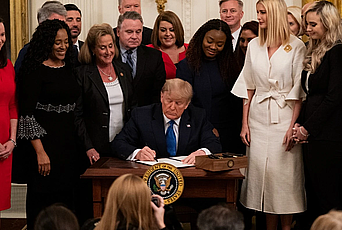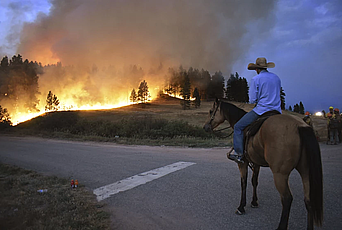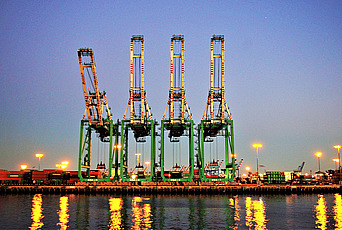Forging a Closed Loop

Throughout the weeks of late November and early December, the scholarly community at IAS was pulled away from our research by the muscular grace of the beautiful game. In the newly opened Rubenstein Commons, we gathered to watch the 2022 FIFA World Cup, held for the first time in the Arab world, in the small but emergent country of Qatar. We huddled over our morning coffee as we watched Saudi Arabia trounce Argentina; during afternoon games, we sprinted out to Fuld Hall at half-time to collect the tea and cookies that would console us when our team lost. We watched Morocco rise from its ranks as the underdog and let ourselves be inspired by the heart with which it played. We watched as Richarlison of the Brazilian team executed a miraculous backward kick into a soaring and unexpected goal, and we watched as Messi ambled across the pitch in the middle of even the most heated games. We cheered in all the languages spoken at the Institute and we felt the sense of community that bound us, for a short time, to the billions around the world who also tuned in to watch the games.
We also marveled at the beautiful stadia in which the games took place: the Al Wakrah stadium with its fluid organic curves; the Education City stadium covered in reflective panels that glimmered in the colors of the Doha sky; the Lusail stadium, made of what seemed ethereal filigree of light. Qatar’s Supreme Committee for Delivery and Legacy, the organizer of this year’s tournament, claimed that these gorgeous stadia were also the emblems of “the first carbon-neutral World Cup in history,”1 and games so pathbreaking in their environmental stewardship that they would redefine how large-scale sporting events were organized around the world. Numerous environmental organizations, from Greenpeace2 to Carbon Market Watch,3 called out this boast as greenwashing and pointed to the funny accounting that had to be deployed in order to turn the games—and the air-conditioned stadiums, grass pitch (flown in and kept alive on desalinated water), daily shuttle flights for spectators from neighboring countries, and massive build out of infrastructure required to host them—into an event that leaves no mark on the climate.
Lost in these debates, however, was a deeper, more troubling story about climate change—a story I witnessed firsthand. In the decade leading up to the World Cup, for examination of labor migration and the structures of production that they interpolated, I conducted research in Qatar on the working conditions for migrant workers in the construction industry. I spent a year shadowing workers on construction sites, interviewing them about their work and spending time with them at their labor camps. I also interviewed managers, engineers, architects, and consultants. I spoke with government and with representatives of Qatar’s Supreme Committee for Delivery and Legacy. And as part of this research, I traveled to many of the countries that migrants were from, especially Nepal, India, and the Philippines.

Through this research, I discovered a story of how the business and government interests that built these games turned climate change and climate migration into profit. It is a story that runs through the recruitment of more than one million migrant construction workers, and through the ways that climate change has impacted the communities they were from. It is a story demonstrating the link between climate change and the conditions of work and migration—and the role global companies can have in shaping this link; thus, it is a story that has implications for how we understand and address the growing relationship between climate change and labor mobility.
Sourcing a Specific Kind of Laborer
Staring down the hard deadline of World Cup kickoff, the global construction companies operating in Qatar needed to recruit thousands and thousands of low-paid workers quickly, sometimes within weeks. But they also needed to be sure that those workers could learn—and learn fast. Qatar’s construction projects (the stadia on our TV screens the most photogenic among them) were at the technological cutting edge, and companies needed workers who could quickly master advanced construction techniques and become the expert scaffolders, welders, and carpenters that the building designs, sketched out by the world’s star architects, required. The workers construction companies recruited—from South Asia, the Middle East and sub-Saharan Africa—all arrived without relevant construction experience. To bridge this gap, companies turned their construction sites into vast and accelerated training systems. They designed their entire workflows to promote learning. All building practices, absolutely every single task, doubled as on-the-job training. Companies viewed their detailed and accelerated training systems as proprietary and used them to compete for bids in the Qatari market. But the training systems were only as good as workers’ ability to learn the advanced construction techniques needed on Qatar’s project sites.
In my interviews with construction companies, I asked their managers and the staff of their human resource departments how they met the challenge of recruiting the hundreds of thousands of teachable laborers they needed for their advanced construction projects. Much to my surprise, almost all of them had developed a similar strategy: to find the workers they needed, construction companies in Qatar sought out places around the world that climate damage had made newly poor. They looked for communities that had once been well-off and that had benefited from investments in education, health, and housing, until torrential monsoon rains or a violent typhoon drowned them out, until slow-moving drought strangled them, or until sea level rise and salt water intrusion poisoned their parched fields. In those climate-impoverished places, they explained, they could source migrants who had the educational foundations that equipped them to learn quickly. There, they could find hundreds and thousands of workers who could connect to the intensive training systems companies used and master the technical skills needed to build the sophisticated and futuristic structures that Qatar had commissioned.
They could recruit these workers, with their all- important foundations for learning, at the low wage of $200 a month (the standard in Qatar until 2021, when it instituted a minimum wage of $275 a month). An additional boon was that migrants and their families in those climate-damaged places still had resources from better days to pay recruitment fees for a visa to Qatar (which ran several hundred, sometimes even thousands, of dollars): their underwater fields could still be mortgaged; their storm-wrecked homes could still be sold.

The Intersection of Global Companies and Climate Change
The global construction companies operating in Qatar were not merely opportunistic in their use of climate damage as a resource for worker recruitment. They actively mentored recruitment agencies in countries that were bearing the brunt of climate change, from Nepal to Bangladesh to Ethiopia, working with them to target places where climate disasters were causing dislocation. As a result, recruitment agencies for Qatar, like those that I visited in Nepal, were quickly becoming specialists in analyzing the potential of different climate pressures to yield workers for export, pulling together highly granular information about the socio-economic consequences of environmental damage. The information they produced was often more complete and more detailed than scientific data available on the ways climate change was transforming the socio-economic practices in those ecologies.
To be sure, in recruiting from climate-damaged areas, companies operating in Qatar offered migrants and their families jobs that paid cash at a time when they badly needed it to rebuild their lives. But in using environmental damage as a resource for recruitment, Qatari recruitment practices drew a closed loop that linked climate change to the conditions of work and migration: Qatar’s construction industry, bankrolled by the country’s massive fossil fuel revenues and emitting large amounts of carbon in the building process, was boosting its profits by recruiting migrant workers, at low wages, from places damaged by the climate change that the industry helped accelerate.
That closed loop was also drawn on and through the bodies of workers. The migrants recruited from climate- damaged ecologies were tasked with working in Qatar’s extreme heat. As the media coverage (which ran like a deep bass under the celebratory projection of the games) made clear, the migrant workers that built the World Cup did so at steep cost to their health. They suffered anomalously high rates of injury and death as a result of the physically-taxing work they did in temperatures that were often life-threatening to a body at rest. In addition to the many deaths that the Qatari government attributed to the nebulous category of “natural causes,” many of the men returned to their communities with silent damage to their kidneys and heart that would only blossom years later. Nepal now faces an epidemic of chronic kidney disease, and incidences of kidney damage are concentrated in the communities that have sent workers to countries, like Qatar, where the heat is dangerous. Communities like Janakpur and Dhanusa are also seeing high numbers of men with chronic kidney disease, which in many cases will become fatal. The medical care required, including lifelong dialysis, is expensive and can tip families into debt far greater than the wages that the migrant could have earned as a construction worker abroad.
The media coverage of the World Cup was striated with stories about the injuries that workers sustained at work, and Qatar was singled out for its exploitative labor practices. But Qatar is not an outlier. The conditions that migrant workers have faced in Qatar are not meaningfully different than those they face in other economies around the world, and Qatar’s labor and migration laws are in many respects more protective of worker rights than those in the United States or the United Kingdom.
In the connection its companies are building between climate damage and migrant worker recruitment, however, Qatar is certainly a harbinger of things to come. Global companies, like those operating in Qatar, will inevitably capitalize on the opportunities that climate damage offers them, and they will shape the significance of climate change for the communities and ecologies it affects. Climate change is often represented as a faceless force, one that we have set in motion through our reliance on fossil fuels but that we cannot control. The story of climate damage and migrant recruitment that unfolded in Qatar’s drive to build the World Cup highlights instead that climate change has a face, and that its consequences are made through specific economic and organizational practices. What climate change will mean for equity, access, and justice will depend on our attention to the way climate change is made through our actions.
Natasha Iskander is the James Weldon Johnson Professor of Urban Planning and Public Policy at New York University’s Wagner School of Public Service. She is currently a Friends of the Institute for Advanced Study Member at IAS (2022–23) in the School of Social Science. Her most recent book is Does Skill Make Us Human? Migrant Workers in 21st Century Qatar and Beyond (Princeton University Press, 2021).
- Gilbert, Ben. “Will Qatar Really Produce ‘the First Carbon-Neutral World Cup in History’?” The Guardian, October 12, 2022, https:// www.theguardian.com/football/2022/oct/12/qatar-carbon-neutral-world-cup-history
- “Will the World Cup in Qatar be Carbon Neutral?” Aljazeera, October 19, 2022, https://www.aljazeera.com/sports/2022/10/19/host-qatars-world-cup-carbon-neutral-claims-under-fire
- “FIFA 2022 World Cup’s ‘carbon neutral’ claim is far-fetched and spurious.” Carbon Market Watch, June 7, 2022, https://carbonmarketwatch.org/2022/06/07/fifa-2022-world-cups-carbon-neutral-claim-is-far-fetched-and-spurious/


